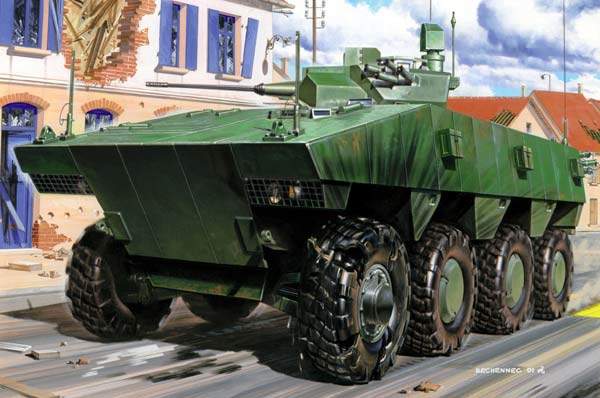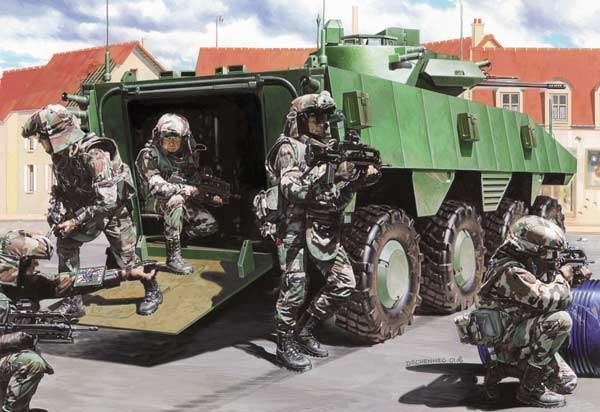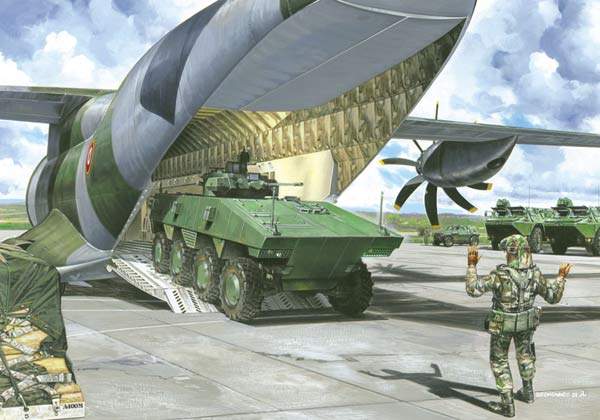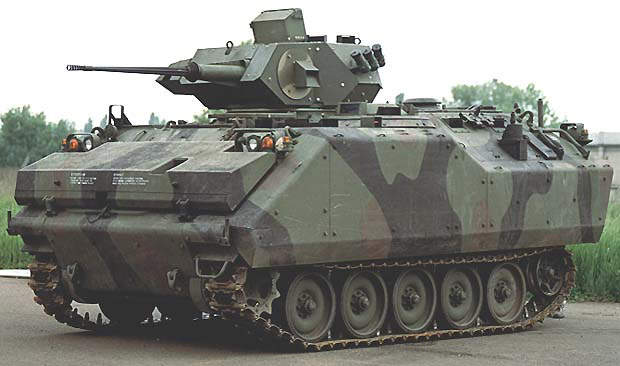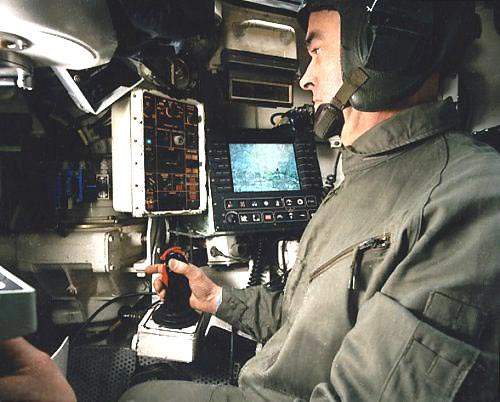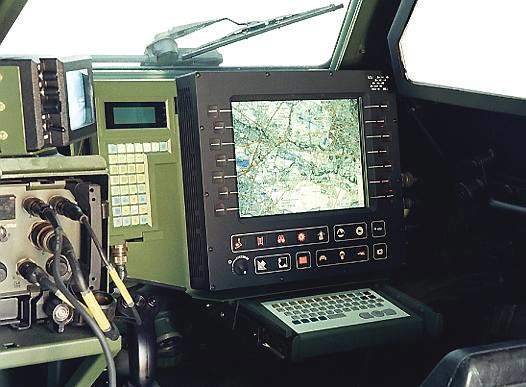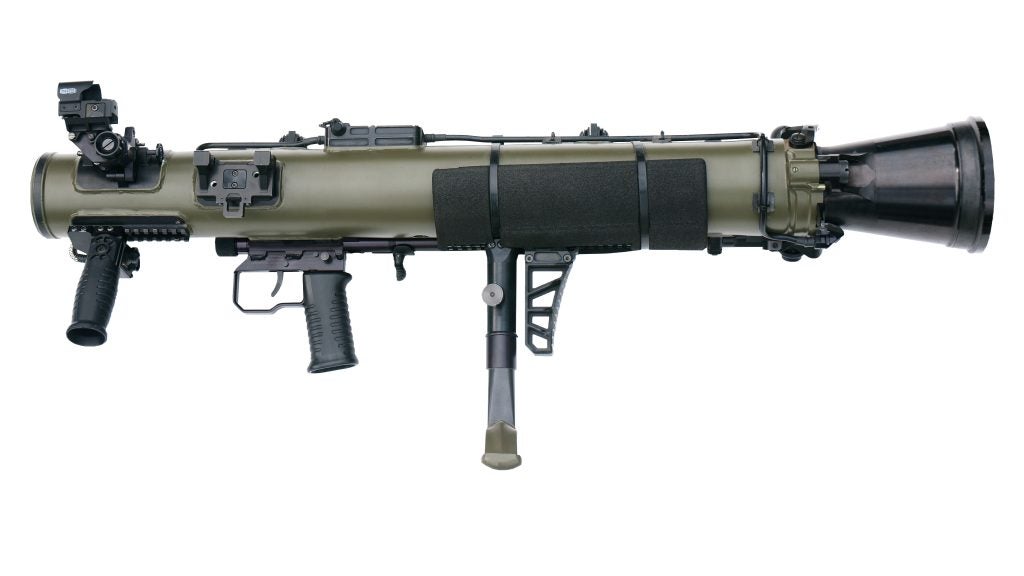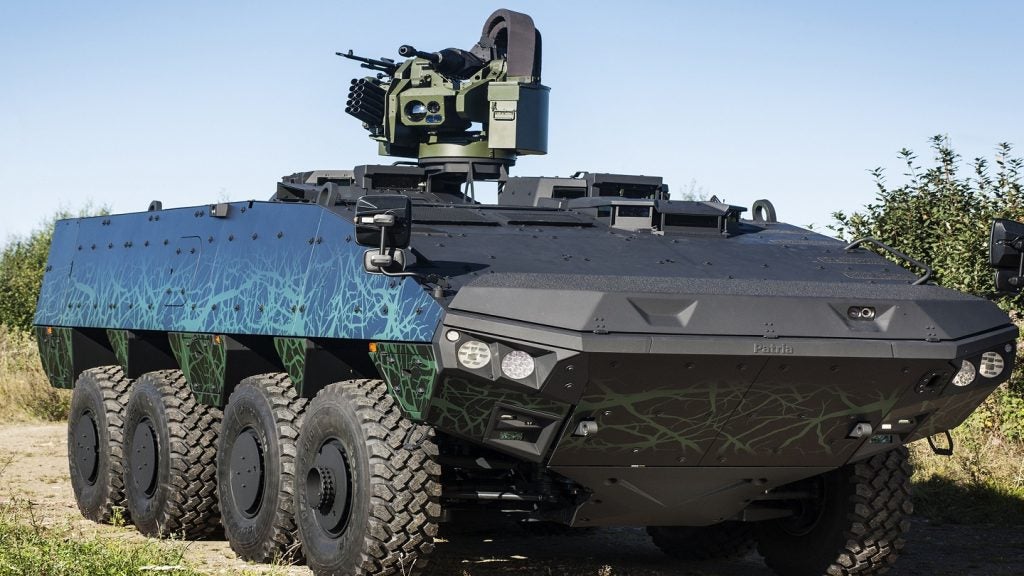The French Army has selected the Nexter / Renault VBCI 8×8 infantry fighting vehicle as a successor to the AMX10P. The VBCI (vehicule de combat d’infanterie) is a wheeled 8×8 infantry fighting vehicle with modular protection that can be adapted to the threat. Conditional orders have been placed to cover the supply of 700 vehicles to the French Army in two versions. There will be up to 550 VBCI/VCI infantry fighting vehicles and 150 VBCI/VPC command post vehicles.
VBCI infantry fighting vehicle contractors
In November 2000, the French Ministry of Defence awarded a contract to Giat Industries (now known as the Nexter Group) and Renault VI (now Renault Trucks) for the first 65 vehicles (54 VCI – including 12 with the Eryx missile system – and 11 VPC). A joint venture company, Satory Military Vehicles, was set up by Giat and Renault Trucks to be responsible for the VBCI and a number of other vehicles.
In September 2003, it was decided to wind up this company and reorganise relations between the two companies.
It was determined that Giat would be prime contractor and have responsibility for marketing of the VBCI, the AMX 10P and AMX 10RC. Renault Trucks Defense is the prime contractor with responsibility for marketing of the VAB.
Renault has responsibility for the mobility systems, including the driver’s station, engine, gearbox, suspension and axles and on-board electrical networks. Nexter is responsible for the armoured hull, interior furnishing, assembly and integration of the turret and vehicle, observation, command and control, weapons and self-protection systems.
VBCI vehicle development
The first two prototypes were completed in May 2004. Five prototypes have been delivered, four VCI and one VPC, and are undergoing qualification trials. One is taking part in operational trials with the French Army. Serial production is underway and the first three production vehicles were delivered in May 2008, two IFV and one command variant.
In July 2007, VBCI was one of three vehicles selected to take part in trials (the ‘Trials of Truth’) for the utility variant of the UK Army’s future rapid effect system (FRES). The General Dynamics Piranha V was provisionally selected for the requirement in May 2008, although in December 2008 this preferred bidder status was withdrawn.
In October 2007, the French defence procurement agency, DGA, issued a purchase order for 117 VBCI vehicles (91 VCI and 26 VPC), bringing the total on order to 182. In December 2008, the DGA ordered another 116 VBCI vehicles. Deliveries began in mid-2009.
In September 2009, DGA placed an additional order for 332 VBCI vehicles, bringing the total to 630. By June 2010, 200 vehicles had been delivered. The last VBCI will be delivered to the French Army by 2015.
Renault has responsibility for the mobility systems, including the driver’s station, engine, gearbox, suspension and axles and on board electrical networks. Nexter is responsible for the armoured hull, interior furnishing, assembly and integration of the turret and vehicle, observation, command and control, weapons and self-protection systems.
VBCI infantry fighting vehicle design
The VCI infantry fighting vehicle version has a combat weight of 26t and accommodates the two crew, the gunner, the driver and a combat team of eight troops and a commander. The troops can rapidly embark or disembark from the power operated ramp door at the rear of the vehicle.
The vehicle will operate in high intensity operations and with Leclerc main battle tanks. The crew and troops are protected from a range of threats, including 155mm shell shrapnel and small and medium calibre shells. The welded steel and aluminium alloy hull is fitted with spall liners and add-on titanium armour plate to protect against anti-tank weapons. The box structure floor and running gear provide protection against exploding mines.
General features include suspension, air conditioning, interior free volume, storage space, NBC warfare protection, and noise and vibration protection.
VCI / VPC weapons systems
The VCI vehicle is fitted with a one-man Nexter Dragar turret armed with a dual feed 25mm Nato cannon type 25 M811 with 150 rounds in the turret and a coaxial 7.62mm machine gun. The cannon has 24V electrical motorisation and rearming.
The cannon fires in single round, three rounds, ten rounds and free burst firing modes with rates of fire at 125 rounds a minute and 400 rounds a minute. The vehicle is also equipped with the LIRE infrared decoy system and smoke grenade launchers.
VPC command post vehicles are equipped with a remotely operated FN 12.7mm machine gun turret.
The VCI is also produced in an anti-tank version, armed with the Eryx short-range missile system and a mortar variant.
SIT terminal information system
The VCI commander’s station is equipped with the SIT terminal information system, developed by Nexter and EADS Defense Electronics Systems. SIT is based on the FINDERS system in service on French Army Leclerc tanks. Nexter is responsible for the software and system integration, EADS for the computer and graphics terminal. The system connects the weapon systems and the command vehicles equipped with them to the chain of command. It allows the exchange of digitised data, including the tactical situation and graphic orders displayed on a background map, between the vehicle and the unit commander.
The vehicle also has high rate secure data and voice communications and a BIFU combat identification system.
The VPC command post vehicles will be fitted with the regimental information system (VBCI/VPC/SIR) developed by EADS.
VBCI fire control system
The gunner is seated in the turret. The gunner’s sight is supplied by Thales Optronique based in Guyancourt. It is a multisensor optronic sight that includes a direct day optical channel, a thermal imager, a laser range finder and video channel linked to the weapon fire control system.
The sight includes a new generation Catherine-QW multi-quantum well thermal camera, based on technology developed by Thales Optronique and Sofradir. The periscopic sight sub-assembly and the laser rangefinder are manufactured by Thales Optronics in the UK.
The commander has a remote display from the gunner’s sight equipped with an override control suite allowing the commander to operate the turret and weapons. The commander also has a day / night image-intensifying observation periscope developed by Thales Angenieux, in partnership with Nexter Systems.
Episcopic sights protect the driver, gunner and commander against eye damage by hostile laser hazards.
550hp diesel engine
The 550hp diesel engine with an in-line six-cylinder configuration and automatic gearbox are installed in the front right of the vehicle. In-line transmission is by four central axles protected by armoured housings. The exhaust gases are diluted to reduce the infrared signature of the vehicle.
The vehicle can reach speeds over 100km/h on metalled roads and has an unrefuelled range of 750km.
The 50cm ground clearance, hydropneumatic suspension and wheels with 395/90 R22 tyres fitted with a driver-controlled variable pressure system provide mobility on all types of terrain.
The front two pairs of wheels are guided and with a turning radius of 17m the vehicle can manoeuvre in confined spaces. The vehicle has demonstrated manoeuvrability in rough terrain over obstacles such as 60° forward slope, 30° side slope, 2m trench and 0.7m steps. The vehicle can be driven with seven wheels if a wheel is lost by mine explosion.
Fording is possible to a depth of 1.2m without preparation and 1.5m with preparation. The vehicle is road and railway gauge compatible and is air transportable on an Airbus A400M.

